Archaeologists have uncovered new insights into the lives of those considered “vulnerable groups during political crises and food shortages” in ancient Roman times.
An open casket, a wooden dish cabinet, and a three-legged table adorned with decorative bowls were among the findings.
This is one of the latest discoveries by archaeologists, enriching our understanding of the middle class in Pompeii, which thrived before the violent eruption of Mount Vesuvius buried the ancient Roman city in volcanic ash.
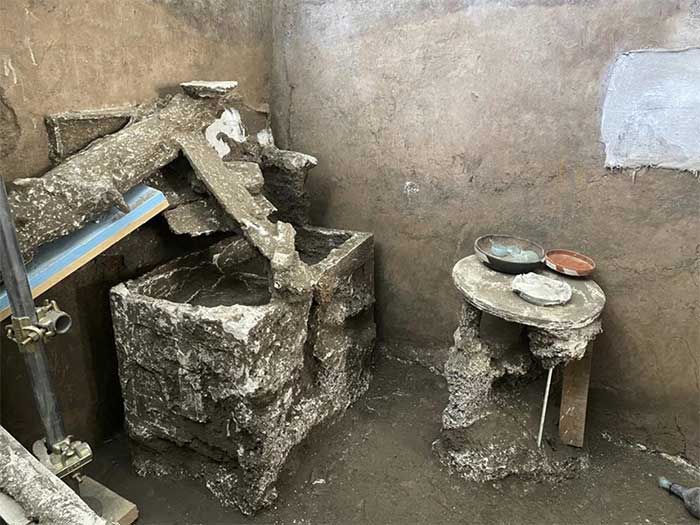
Recent discoveries in the ancient city of Pompeii. (Photo: AP).
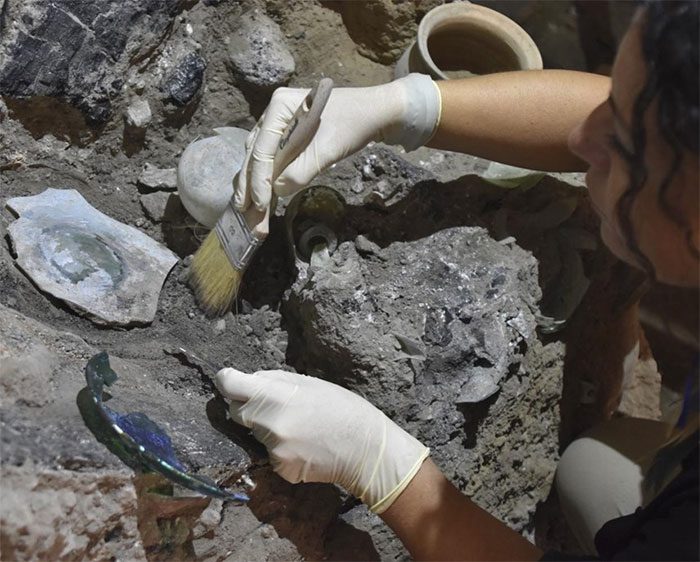
Archaeologists working on the site of a new discovery. (Photo: AP).
The director of the archaeological site, Gabriel Zuchtriegel, stated that excavating the rooms or houses, which began in 2018, has revealed valuable details about the daily lives of ordinary citizens of the city, which was destroyed in 79 AD.
In previous decades, excavations primarily focused on the luxurious villas adorned with elaborate frescoes of the upper-class residents of Pompeii. However, archaeological efforts at the vast site near modern-day Naples are increasingly concentrating on the lives of the middle class, as well as servants and other enslaved individuals.
Zuchtriegel noted: “In the Roman Empire, many people struggled with their social status, and for them, daily bread was just a given.”
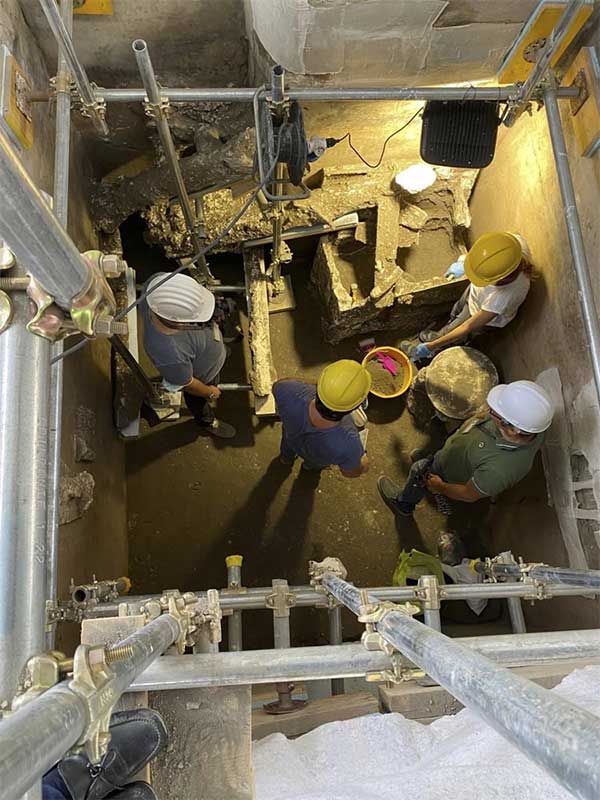
Archaeologists working on the site of a new discovery. (Photo: AP).
“A vulnerable class during political crises and food shortages, but also ambitious to climb the social ladder.”
The findings announced on August 6 include furnishings and household items from a residence known as the House of Lararium—an area of the home dedicated to domestic spirits known as “lares.” The house was excavated in 2018.
Zuchtriegel pointed out that while the courtyard also featured a specially adorned cistern, “it is clear that financial resources were insufficient to decorate five rooms in the house.” One room had unpainted walls and an earthen floor, seemingly used as a storage area.
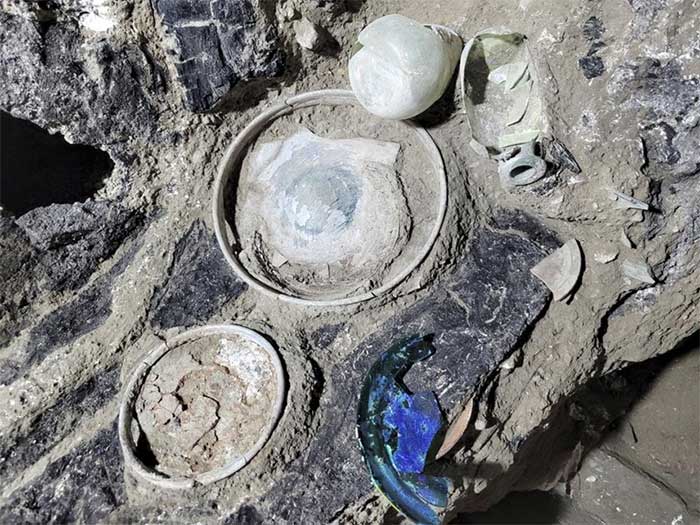
Recent discoveries in the ancient city of Pompeii. (Photo: AP).
In one bedroom, archaeologists found remnants of a bed frame with traces of fabric on the pillow. The bed was identical to three cradles excavated last year in a small room of another villa, which archaeologists believe were repurposed as storage and sleeping areas for a family of enslaved residents in Pompeii.
The findings in the bedroom announced on August 6 also included remnants of a wooden trunk with an open lid. Although the weight of the beams and ceiling panels collapsed during the volcanic eruption severely damaged the trunk, among the objects found was an oil lamp decorated with a relief depicting the ancient Greek god Zeus transformed into an eagle.
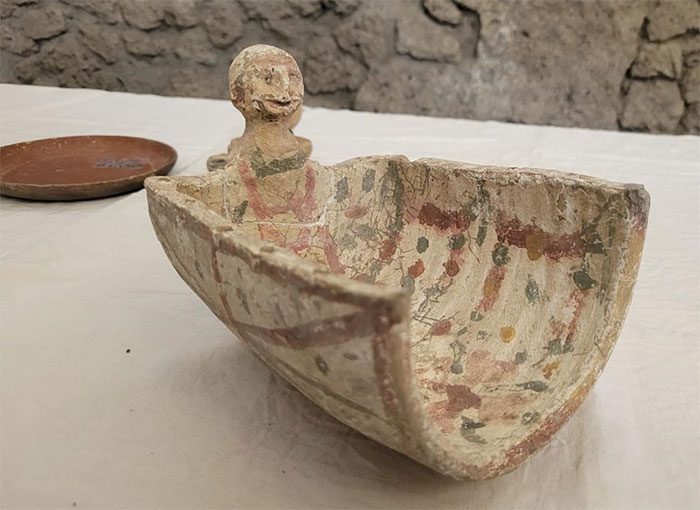
Recent discoveries in the ancient city of Pompeii. (Photo: AP).
Nearby, there was a small round table with three legs, similar to trendy accent tables today.
Inside the storage room, there was a wooden wardrobe, the back of which remained intact but with hanging shelves inside. Archaeologists believe the wardrobe had at least four doorways and contained cooking utensils and dishware for the nearby kitchen. Excavators found a hinge from the enclosed area.
Other items found in the house included a large shard of a translucent plate edged with vibrant cobalt and emerald colors, and a well-preserved incense burner shaped like a cradle.
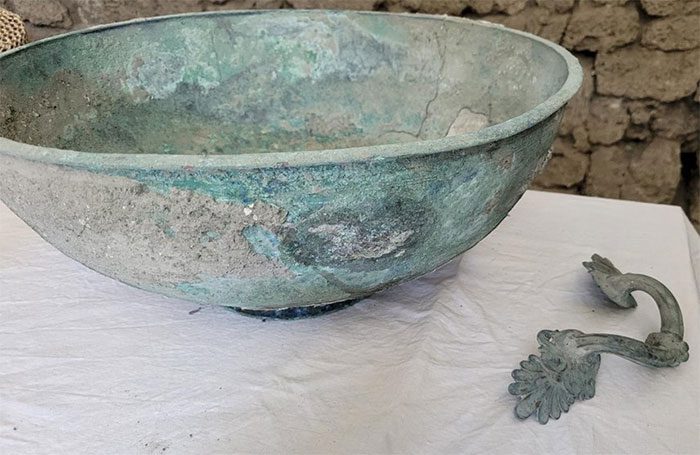
Recent discoveries in the ancient city of Pompeii. (Photo: AP).





















































